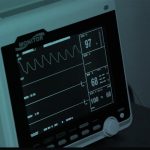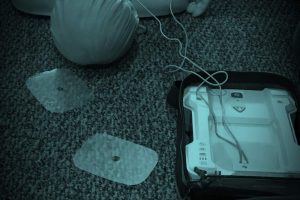
Abstract
Background: For out-of-hospital cardiac arrest (OHCA) in residential areas, a dispatcher driven alert-system using text messages (TM-system) directing local rescuers (TM-responders) to OHCA patients was implemented and the desired density of automated external defibrillators (AEDs) or TM-responders investigated.
Methods: We included OHCA cases with the TM-system activated in residential areas between 2010-2017. For each case, densities/km2 of activated AEDs and TM-responders within a 1000 m circle were calculated. Time intervals between 112-call and first defibrillation were calculated.
Results: In total, 813 patients (45%) had a shockable initial rhythm. In 17% a TM-system AED delivered the first shock. With increasing AED density, the median time to shock decreased from 10:59 to 08:17 min. (p < 0.001) and shocks <6 min increased from 6% to 12% (p = 0.024). Increasing density of TM-responders was associated with a decrease in median time to shock from 10:59 to 08:20 min. (p < 0.001) and increase of shocks <6 min from 6% to 13% (p = 0.005). Increasing density of AEDs and TM-responders resulted in a decline of ambulance first defibrillation by 19% (p = 0.016) and 22% (p = 0.001), respectively. First responder AED defibrillation did not change significantly. Densities of >2 AEDs/km2 did not result in further decrease of time to first shock but >10 TM-responders/km2 resulted in more defibrillations <6 min.
Conclusion: With increasing AED and TM-responder density within a TM-system, time to defibrillation in residential areas decreased. AED and TM-responders only competed with ambulances, not with first responders. The recommended density of AEDs and TM-responders for earliest defibrillation is 2 AEDs/km2 and >10 TM-responders/km2.
Full article;






